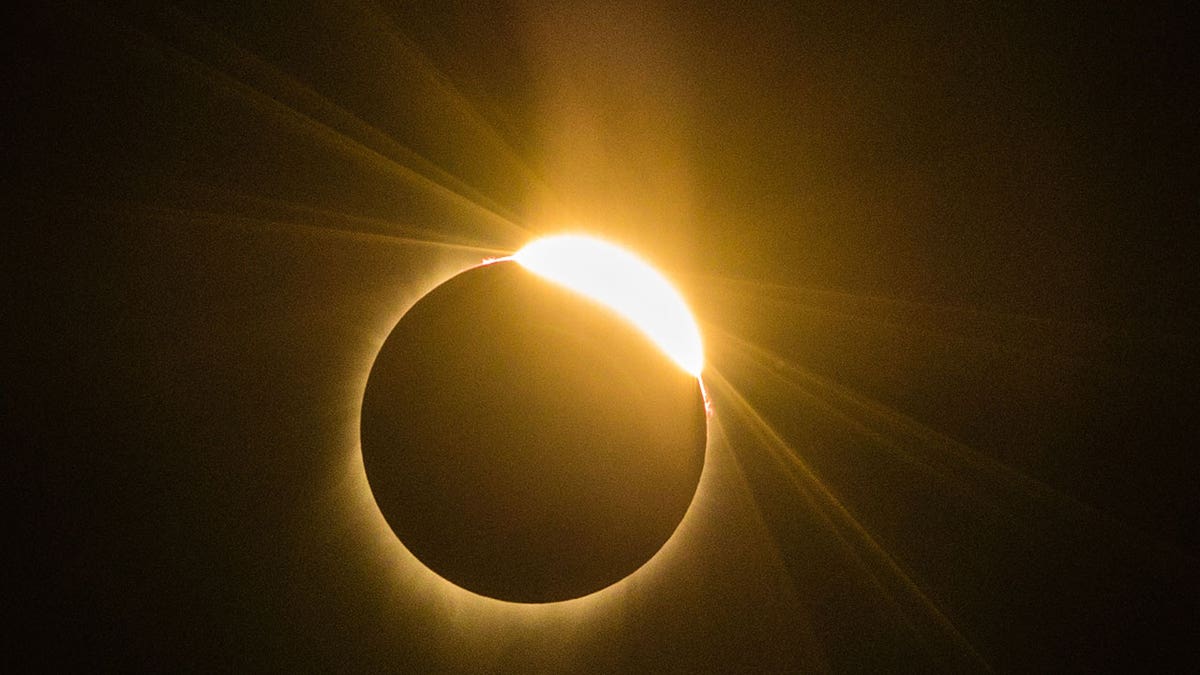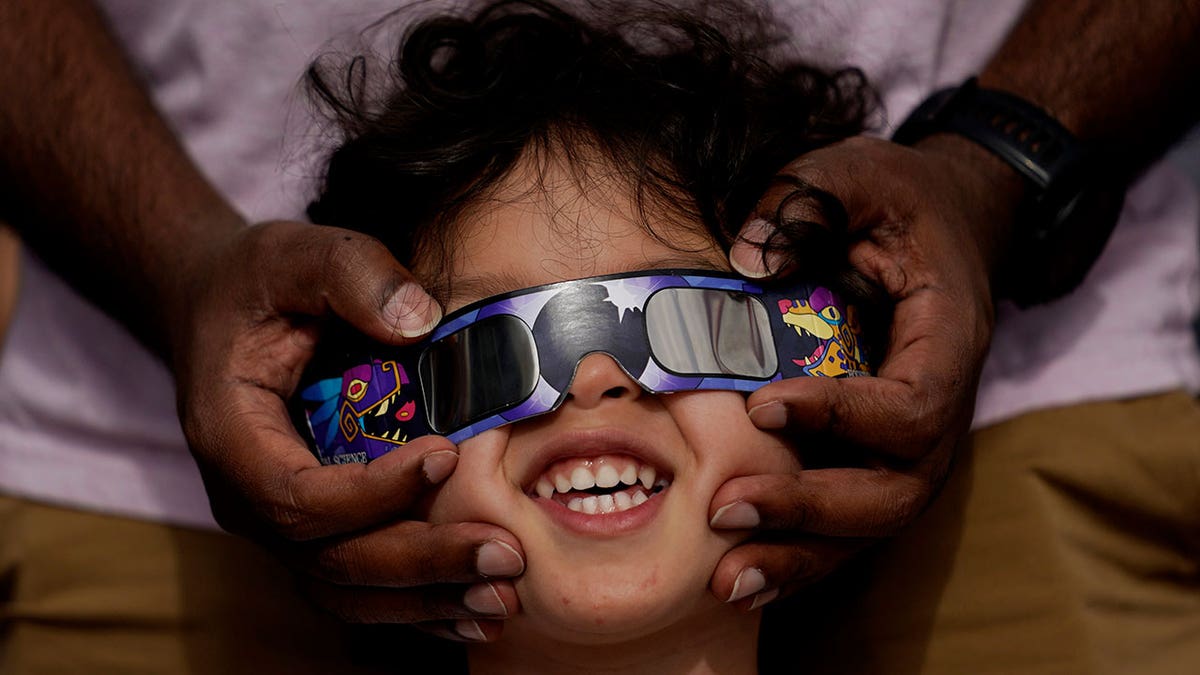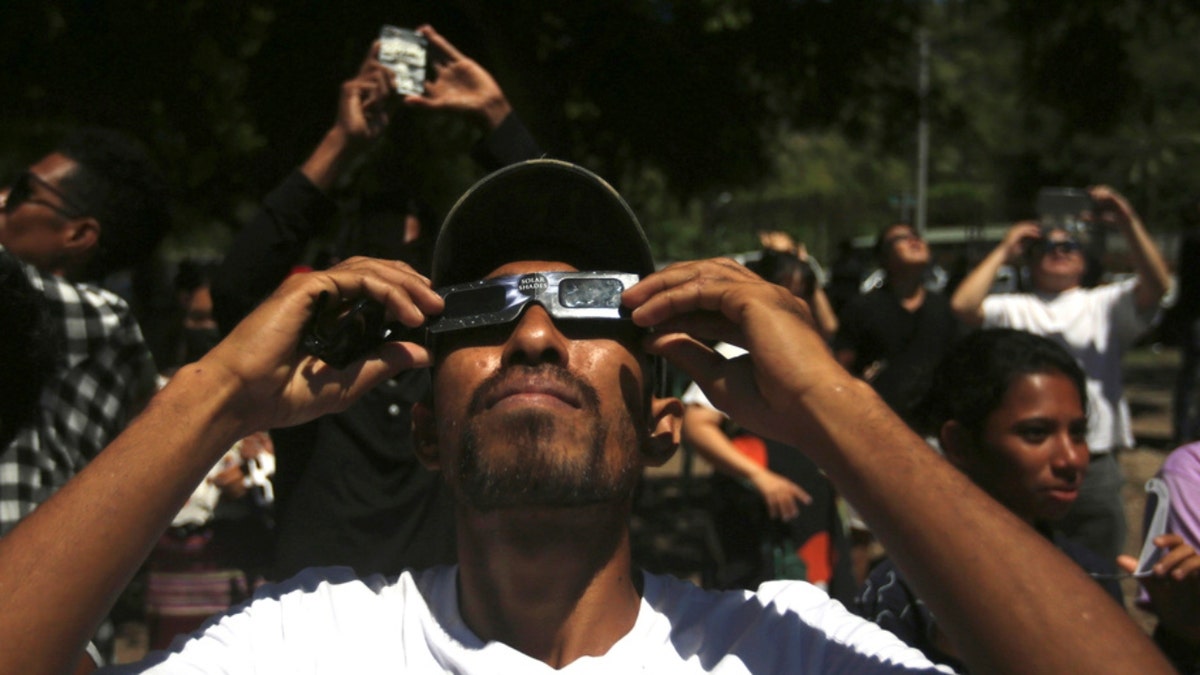Travel expert sheds light on preparation for solar eclipse
Lee Abbamonte discusses how Americans are preparing to travel for the upcoming solar eclipse on "Your World."
A total solar eclipse is expected to bring minutes of darkness to North America during the middle of the day on April 8, and it will likely be one of the most photographed events of the year.
Many Americans are already preparing to witness and capture the rare cosmic event, which some experts say won’t occur in the U.S. for another 20 years.
Since onlookers will only have a short time to capture the event, here are five tips on how to photograph the total solar eclipse.
1. Protect your eyes … and camera equipment
With the sun as the focus during the eclipse, NASA is reminding onlookers that looking directly at it is dangerous to both your eyes and your camera.
SOLAR ECLIPSE 2024: WHERE AND HOW TO VIEW THE RARE ORBIT HITTING THE US

The total solar eclipse is expected to hit the U.S. on April 8. Fifteen U.S. states will get to see the full eclipse. (Rob Kerr/AFP via Getty Images/File)
To protect your eyes, NASA suggests a pair of solar viewing glasses, also known as eclipse glasses, and using a special solar filter to protect your camera against intense sunlight and heat.
When the moon completely blocks the sun and reaches totality, photographers should remember to remove the solar filter on their cameras to catch the sun’s outer atmosphere, called the corona, which the space agency says is normally hidden by the bright light of the sun's surface.

A pair of special glasses known as eclipse glasses will protect your eyes from the powerful solar rays during the eclipse. (AP Photo/Eric Gay/File)
2. Don’t be picky about your camera
Any camera can capture the eclipse, from a high-end DLSR to our smartphones, according to NASA, which says that great photos of the cosmic event will mostly be determined by the photographer’s skill.
NASA suggests that those with DSLR cameras can find the best exposure by testing its settings on the uneclipsed sun beforehand.
‘RING OF FIRE’ ECLIPSE: WHAT TO KNOW ABOUT THE RARE PHENOMENON HEADED TO THE US
"Using a fixed aperture of f/8 to f/16, try shutter speeds between 1/1000 to 1/4 second to find the optimal setting, which you can then use to take images during the partial stages of the eclipse," the space agency says. "During totality, the corona has a wide range of brightness, so it’s best to use a fixed aperture and a range of exposures from approximately 1/1000 to 1 second."

This combination of photos shows the path of the sun during a total eclipse by the moon. (AP Photo/Ted S. Warren/File)
Associated Press chief photographer Julio Cortez advises using a smaller aperture – f11 or f17 – to keep the focus "a little bit sharper."
3. Practice and planning
Finding a good area to view the eclipse is the first step to snapping a memorable photo. The best views will be closer to the eclipse's path of totality, which will pass over Mexico's Pacific coast and end in eastern Canada.
NASA's map shows how many minutes of totality there will be if you're inside the path, depending on location, and how much of a partial eclipse you'll see if you're outside of it.

Those not in the path of totality will see a partial solar eclipse. (Carlos Avila Gonzalez/San Francisco Chronicle via Getty Images)
Practice taking photos with any camera equipment you plan on using to get comfortable and prepared for the event. A tripod will help stabilize the camera and avoid blurry images, while using a delayed shutter release timer will help take steadier shots, NASA says.
4. Can I take a selfie?
With the selfie becoming a go-to method of taking photographs to capture the moment, some health experts warn that taking one during an eclipse can be dangerous.
RESEARCHERS TO OBSERVE ANIMAL BEHAVIOR AT TEXAS ZOO DURING UPCOMING SOLAR ECLIPSE
"Many people will think it’s safe to take a selfie with the eclipse in the background because they aren’t looking directly at the sun," Dr. Tongalp Tezel, a retina expert at Columbia University Medical Center, said in a post on the institution’s website in 2017. "What they may not realize is that the screen of your phone reflects the ultraviolet rays emitted during an eclipse directly toward your eye, which can result in a solar burn."

Experts warn photographers to be careful taking selfies because the phone's screen can reflect the harmful ultraviolet light into your eyes or the eyes of others. (AP Photo/Lorenio L. Pereira/File)
The Associated Press also points out that if you’re using a solar filter on the selfie camera, the resulting image may come out too dark to see yourself.
One more thing …
Don’t be too focused on only looking up during the eclipse.
While the eclipse itself is the star of the show, during the minutes of darkness when the moon slides over the sun, eerie lighting and shadows will cover the landscape, creating a unique opportunity to capture trees, birds and other wildlife in the moment.

The total solar eclipse can be seen in North America on April 8. (iStock)
NASA photographer Bill Ingalls says that looking at your surroundings and at other people enjoying the experience will also make for great moments to capture and "show the emotion of the whole thing."
The Associated Press contributed to this report.

